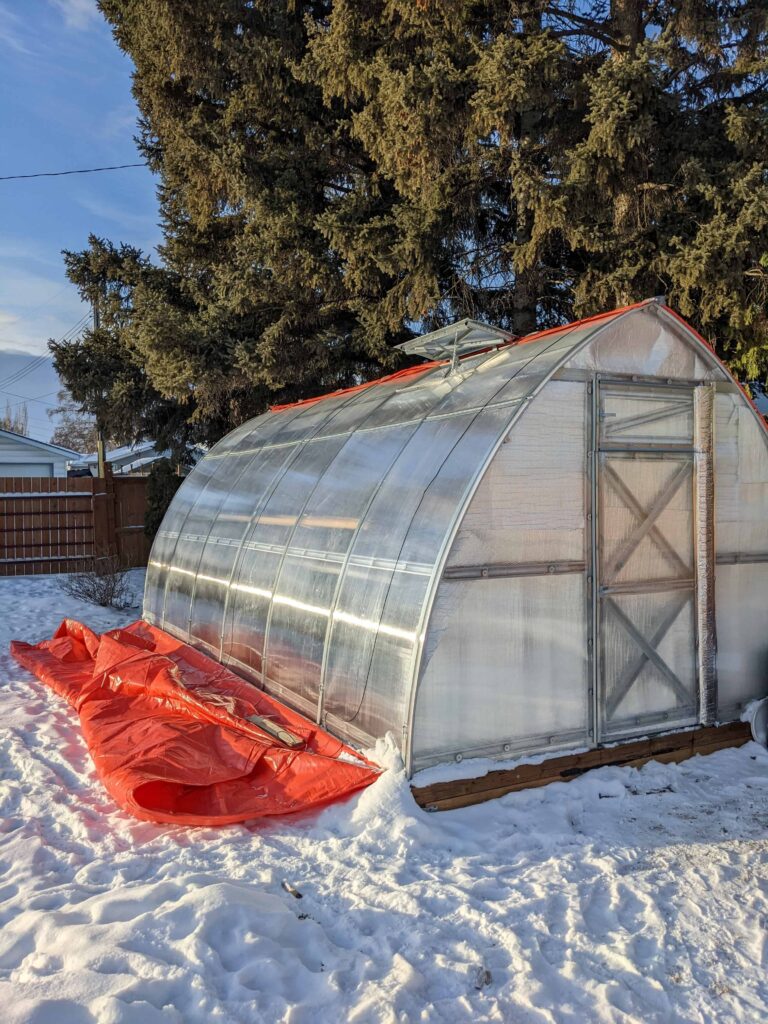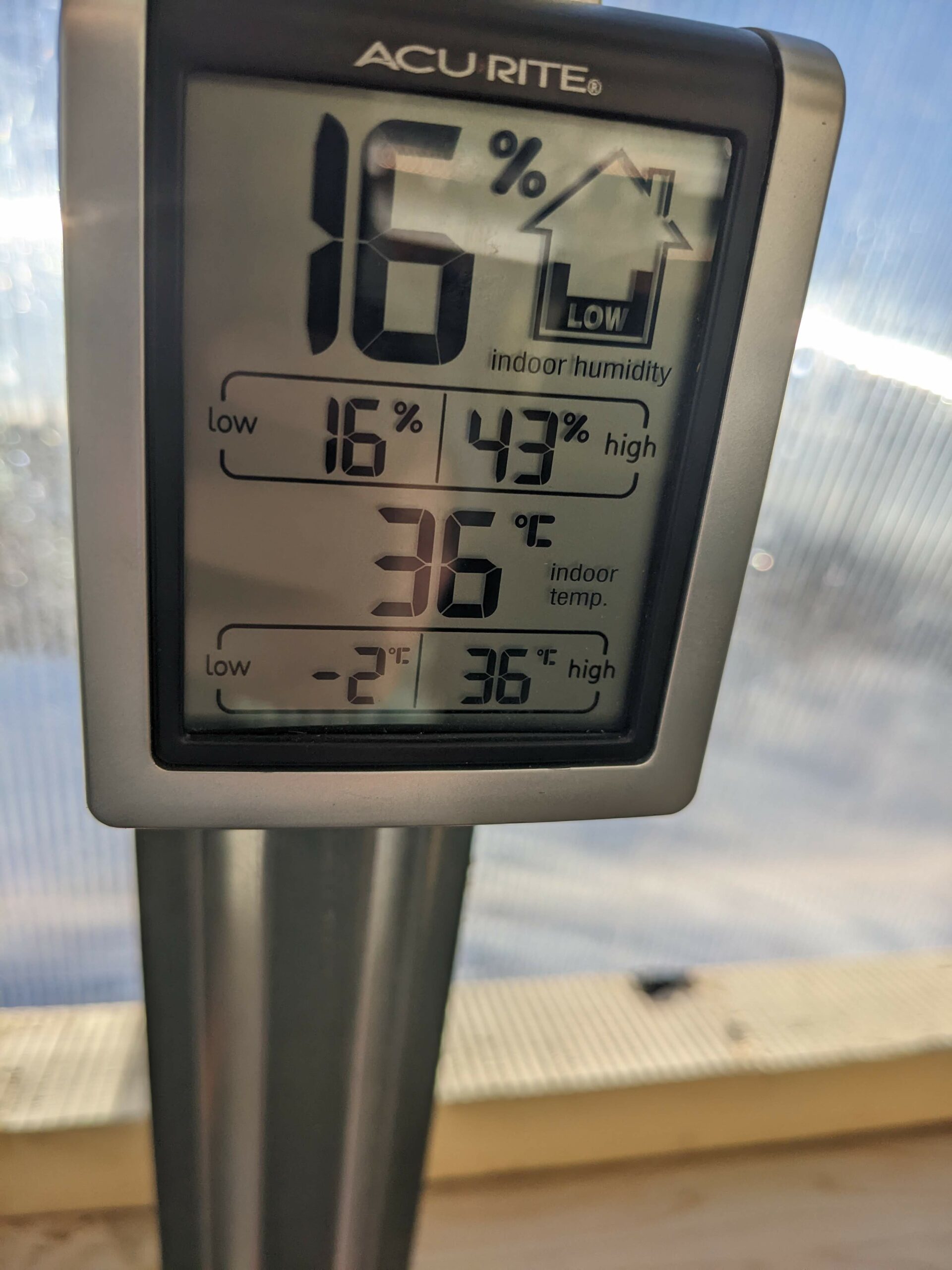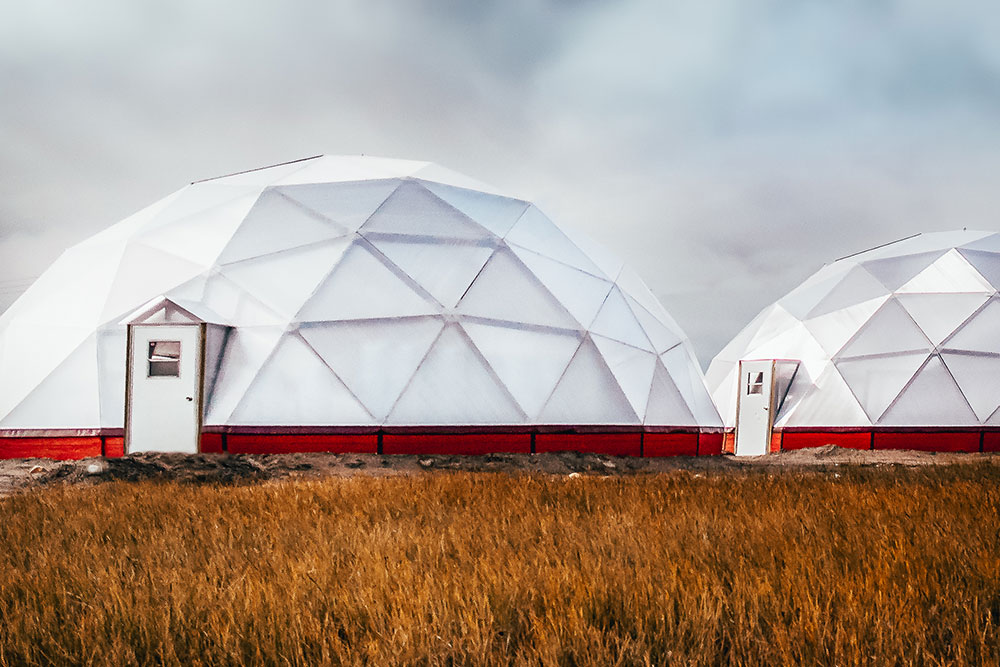

Jennica here!
This fall, we launched a research and development project, thanks to our new partners Planta Greenhouses! The greenhouse is located in Red Deer, Alberta, and we will document every step of the process.
Here is a little update on how the Research & Development greenhouse in Red Deer has been progressing.
Laying the Foundation
We started on the foundation in October and opted for a 4x4 wood perimeter with a rock wool insulated base covered with sand and gravel. The pea gravel is the interior floor, though I would choose different materials if I were re-doing. It is great for drainage and dirt management, but tiresome to walk on and does not provide a sturdy base for the large grow boxes and tables.
Building the Greenhouse Frame
Once the foundation was complete, the team assembled the greenhouse frame. This took several more hours than anticipated, but once it was completed, we could apply the polycarbonate sheeting and wrap it up fairly quickly. It was so great to see the poly on and to feel the difference it could make in temperatures.
Extending the Growing Season
As we knew this greenhouse would be used to push the season as far as possible, we chose to insulate the exterior with a simple insulated construction tarp. This was applied on the exterior and secured with the greenhouse strapping to ensure it would not be blown away. We also used reflective bubble wrap insulation along the interior north and end walls to further seal gaps and reduce cold infiltration. There is a double purpose in using the reflective properties of this insulation as it will also help to maximize the available sunlight. While it may seem counterintuitive to close in the greenhouse, the 20-foot south wall still has full sun exposure and is adequate for our winter growing needs. We have also added supplemental lighting across the growing beds to compensate for the shorter day length.
Adding Growing Beds
For the interior growing beds, we chose to use large black plastic tubs. Again this serves multiple purposes. First, the tubs could be used in shipping items into the communities, and secondly, they are an excellent size for growing smaller crops and third, and perhaps the most advantageous, is that the black colour is an excellent heat sink. The black bins are stacked two high along the north wall of the greenhouse. The bottom ones are filled with water, while the top bin is filled with soil, and these become our planting beds. With both sets of bins filled with heat-absorbing materials, our thermal mass increases and allows us to better regulate the interior temperatures.
We also have a 100-gallon stock tank filled with water to add thermal mass, and some humidity and act as a water source for the greenhouse. We have a small aquarium heater in the tank which holds the temperature at about 17℃. The surface of the water is covered with reflective insulation as it does not absorb moisture. The reflective surface does not serve us well when absorbing as much solar energy as possible, so I have laid black plastic over the insulation. The tank provides a great source of radiant heat and temperature regulation.
I added 2 black rubber stall mats to the floor in an effort to reduce gravel movement and to also increase our thermal capacity. It has been much easier to walk and work with these rubber mats. They do ‘show the dirt’ a fair bit, so please let me know if you are planning to visit and I'll make sure to get the broom out. 😉
I have set up tables along the south wall and will start many seeds in trays there in the coming weeks.
The exterior south wall has a sort of thermal curtain installed, and while not perfect, it does cut the heat loss by about half. Again using a simple insulated construction tarp and some ropes, we can pull the tarp up and over the greenhouse, securing to stakes on the north side, effectively making an insulated tent for our precious green babies.
Planting Crops
We planted several small cold-season greens in early November, and everything has sprouted and is looking good! Growth is slow during these cold snaps, but is happening! While our coldest night inside the greenhouse dipped to about -5℃, it was about -32℃ outside. The growing beds are covered with more reflective bubble insulation and receive added light and heat from the grow lights that operate on timers.
Monitoring Greenhouse Temperatures
We are using ‘smart’ thermometers/hygrometers to monitor the interior temperature, and I have 2 set up
for the ambient air temps and one to monitor the bed temps. The bed temps have yet to hit freezing, so this
is excellent news given that it is well below freezing outside! As the temperature has continued to drop, I
have added a poly drape near the main door to block the cold air from infiltrating the greenhouse as we come
and go. The sun is an incredible source of heat, and even when it is -20 outside, the air temperature can
reach over 30 on a sunny day!

While greenhouse growing presents many challenges in the cold climes of winter, it is very exciting to see the seeds transforming into plants! To watch them grow and develop is a privilege and a blessing. I am grateful to be nurturing them as they nurture me through the winter.
I look forward to updating you on how the greenhouse transforms!








